 Caricamento in corso...
Caricamento in corso...
 Caricamento in corso...
Caricamento in corso...
The rue Montorgueil is particularly attractive because of its liveliness emanating from the numerous food shops, like Stohrer pastry, and seductive café terraces. We’ll come back to it in future articles.
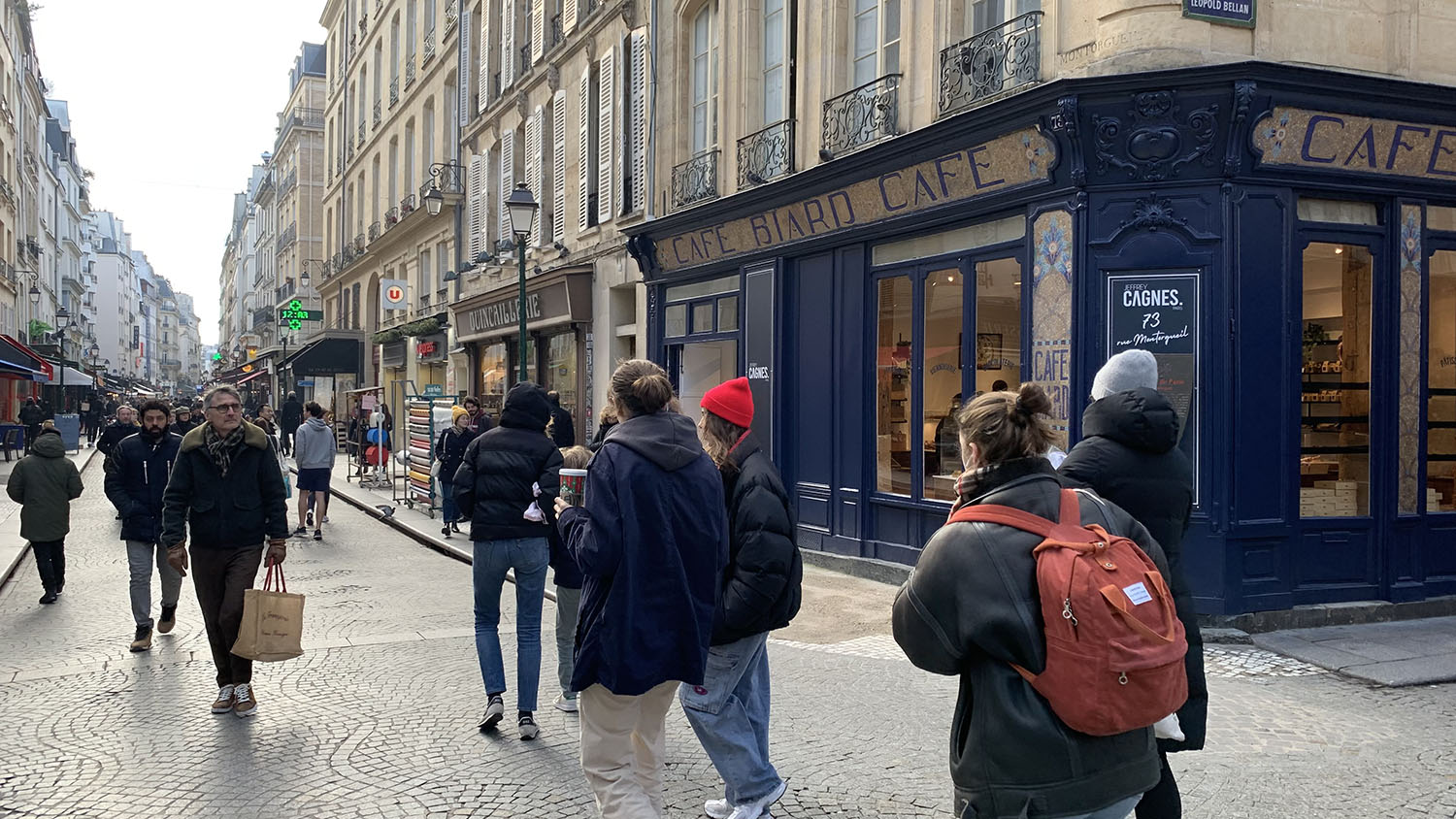
On the right, Jeffrey Cagnes’ pastry shop
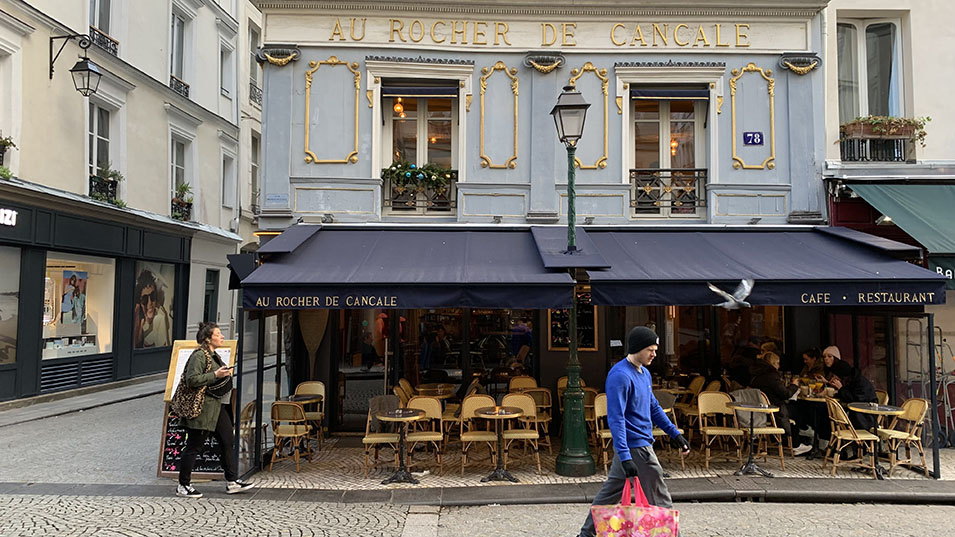
The old fishmonger’s Au Rocher de Cancale (Cancale is a small fishing port in Brittany, famous for its flat oysters)

La belle Iloise, a quality cannery created in 1932, near the fishing port of Quiberon (Brittany)
The street has several points of interest and the most famous is undoubtedly the Stohrer pastry shop whose products are as magnificent as they are rich in history. If, like us, you are an epicurean and like “generous” pastries, you will have a great time when you visit this place and taste its products.
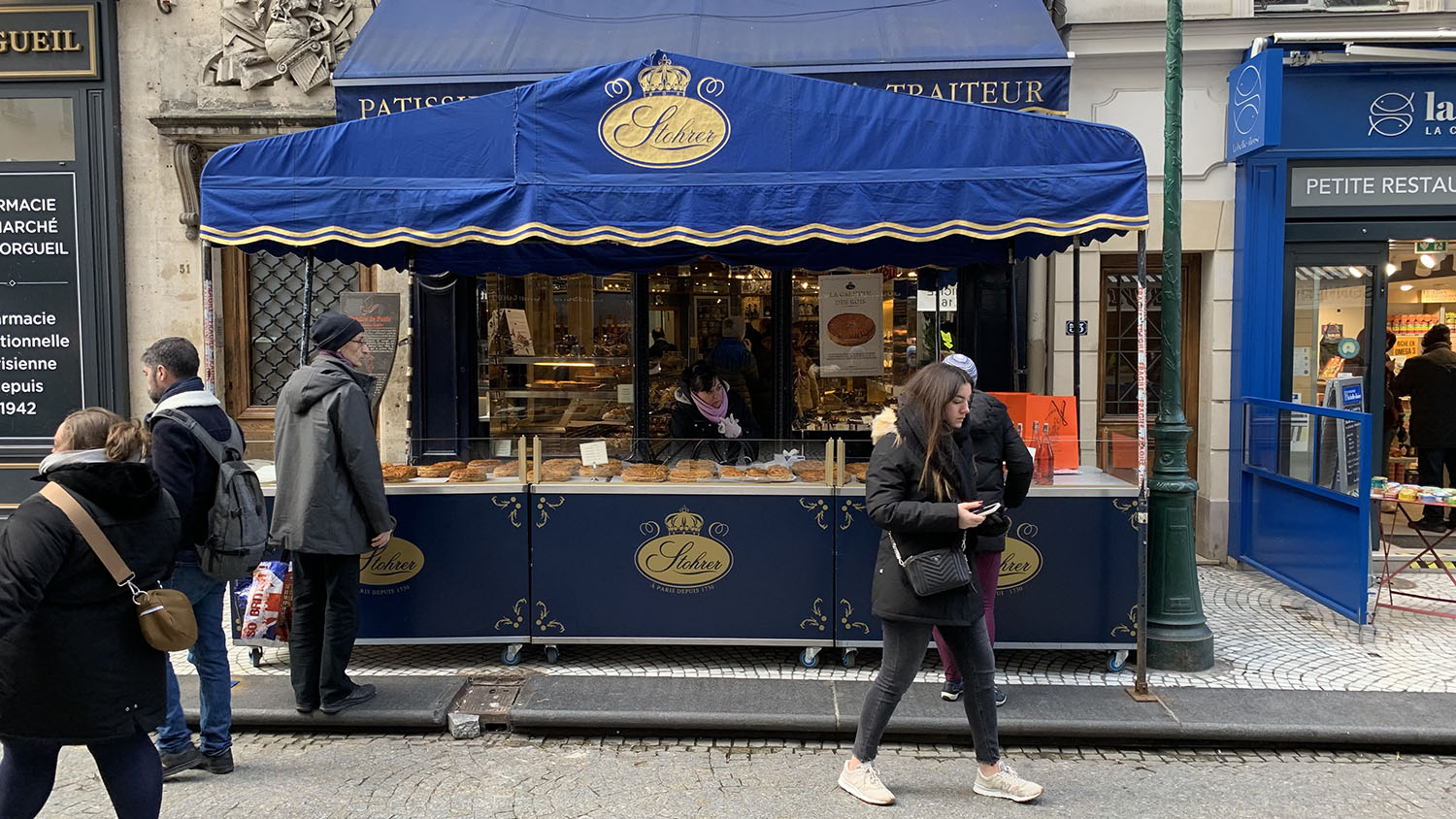
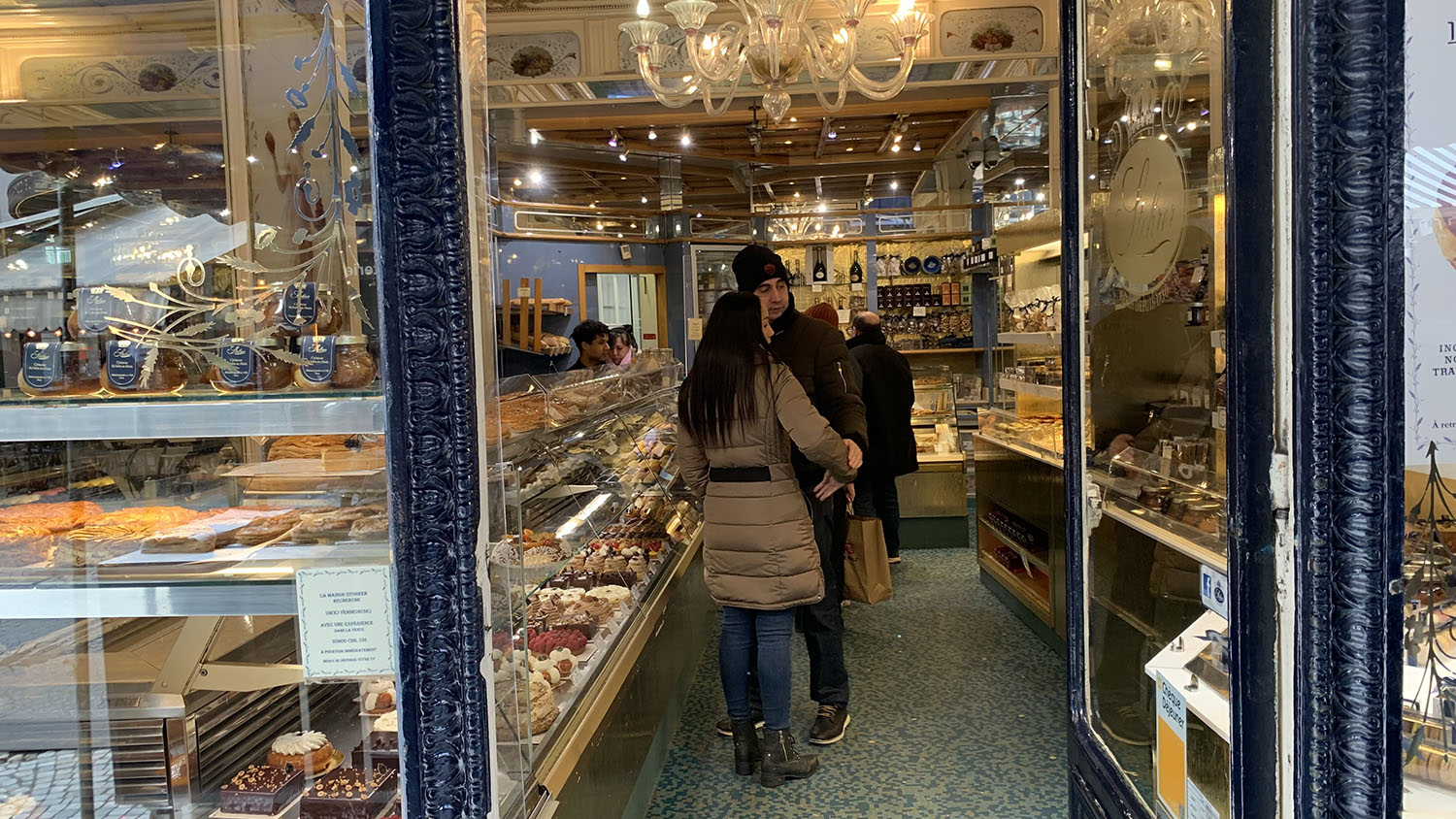
Founded in 1730, Stohrer is the oldest pastry shop in Paris. Its interior decoration is classified and unchanged since 1840. The façade is also classified as a historical monument.
Nicolas Stohrer was the pastry chef of King Louis XV. Nicolas Stohrer is considered today as one of the precursors of the pastry and creator of the Baba au rhum. Until the 17th century, the “pâtissier” was called the “pastoyeur”, i.e. the maker of pâté, both salty and sweet. Sugar arrived in the middle of the 17th century.
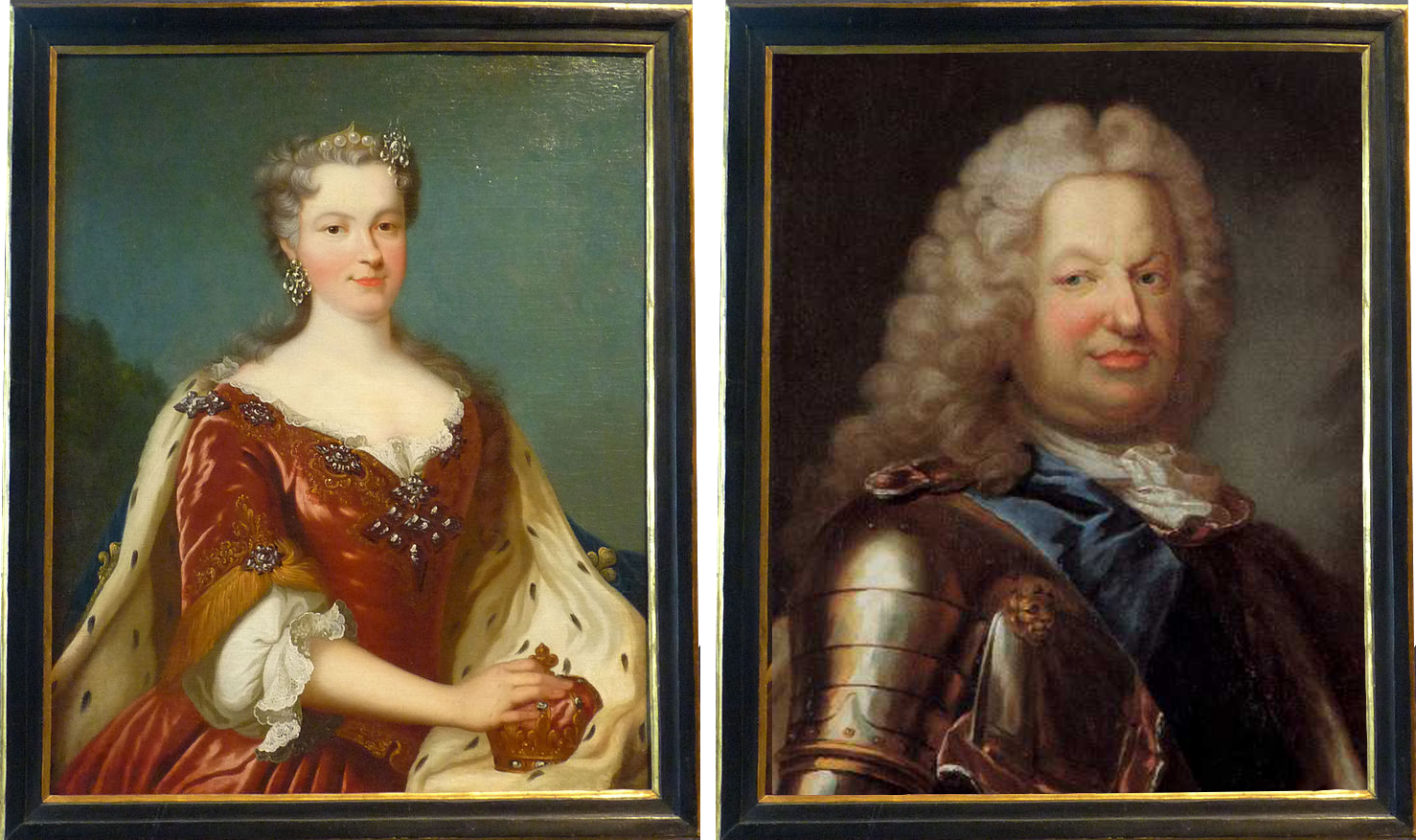
Marie Levinska and her father Stanislass Livinski
It all began for Nicolas Stohrer when he entered the service of Stanislass Leczinski, King of Poland then in exile in France. The King brings back some kouglofs from one of his trips to Alsace (Nancy?) and gives them to Nicolas Stohrer, telling him that, tired of the dry texture of the travel cake, he has taken the habit of soaking them in Madeira wine. Nicolas Stohrer then had the idea to substitute the Madeira wine with a Malaga wine, then sweet and popular. He then served King Stanislass this brioche soaked with custard and raisins. King Stanislass is a fan of the Arabian Nights tales and his favorite character is Ali Baba. Nicolas Stohrer named his creation “Baba”. A little later, the daughter of King Stanislass, Marie Leczinska, married Louis XV and by force of circumstance, Nicolas Stohrer became the pastry chef of King Louis XV. Nicolas Stohrer discovered rum at the court of King Louis XV. The Baba then became the Baba au Rhum.
Much later, in 2004, Queen Elizabeth II, then on a state visit to Paris and accompanied by the Mayor of the City, stopped by the Stoher pastry shop. The 15-minute visit lasted 45 minutes and caused a delay in the dinner that made President Chirac jealous.
Everything you will taste in this pastry shop comes ONLY from the laboratory located in the back of the store. All pastries are freshly made.
We have tested for you 4 pastries.
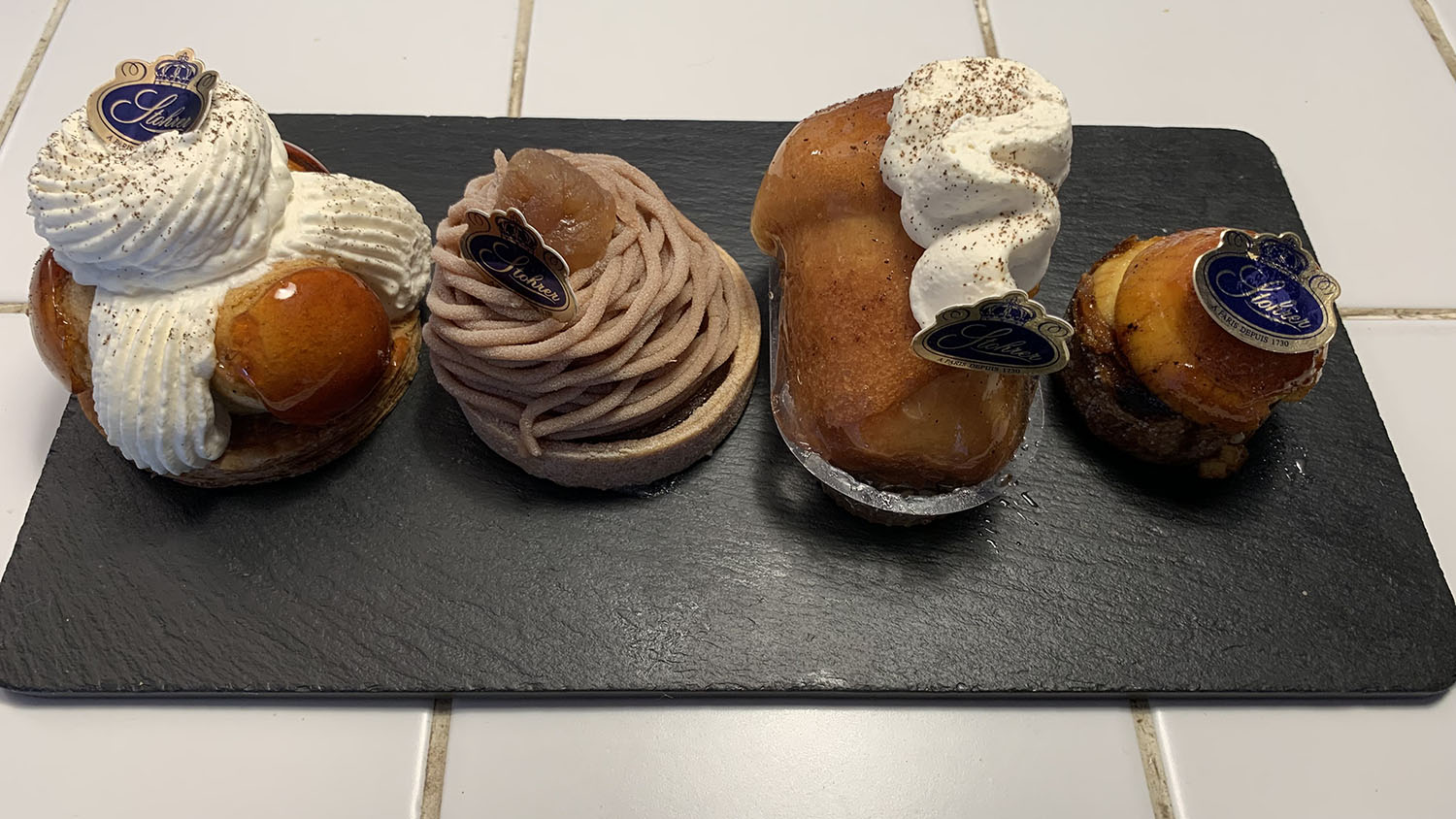
From left to right: The Saint-Honoré, the Mont Blanc, the Baba au Rhum, the Puits d’Amour
Stohrer’s Saint-Honoré is made of choux pastries with chiboust cream, which is a light custard, and egg whites beaten into meringue. The choux are mounted on a puff pastry, and decorated with a Chantilly cream. The choux are particularly tasty.
The Mont Blanc from Stohrer is a candied chestnut on a chestnut cream with whiskey. The device is a shortcrust pastry and not a meringue as traditionally. It is very fresh, not too sweet and finally quite light. It is quite convincing.
Originally the Baba au Rhum “of Louis XV” then called the Ali Baba was a Kouglof filled with custard with Bourbon vanilla (from Reunion Island) and raisins. What changes in the current recipe. The Kouglof has been replaced by a brioche is in the shape of a cap because the texture is lighter, more airy, and lends itself better to a dipped cake. The pastry cream was replaced in the nineteenth century by a Chantilly cream, lighter.
In beautiful Naples, where rum baba is a regional pride, we have not tasted a rum baba that comes close to Stohrer’s rum baba. Stohrer’s Baba au Rhum is undoubtedly a 10/10 pastry.
Finally, you must also be seduced by the Puits d’Amour, which is a delicacy that Louis XV reserved for his mistresses. It is a caramelized cake with red iron on a flaky pastry topped with a Bourbon vanilla cream.
Finally, we also left with two travel cakes: a Kouglof and a frangipane cake. The Kouglof is quite good, but not as generous as the ones you can find in Alsace.
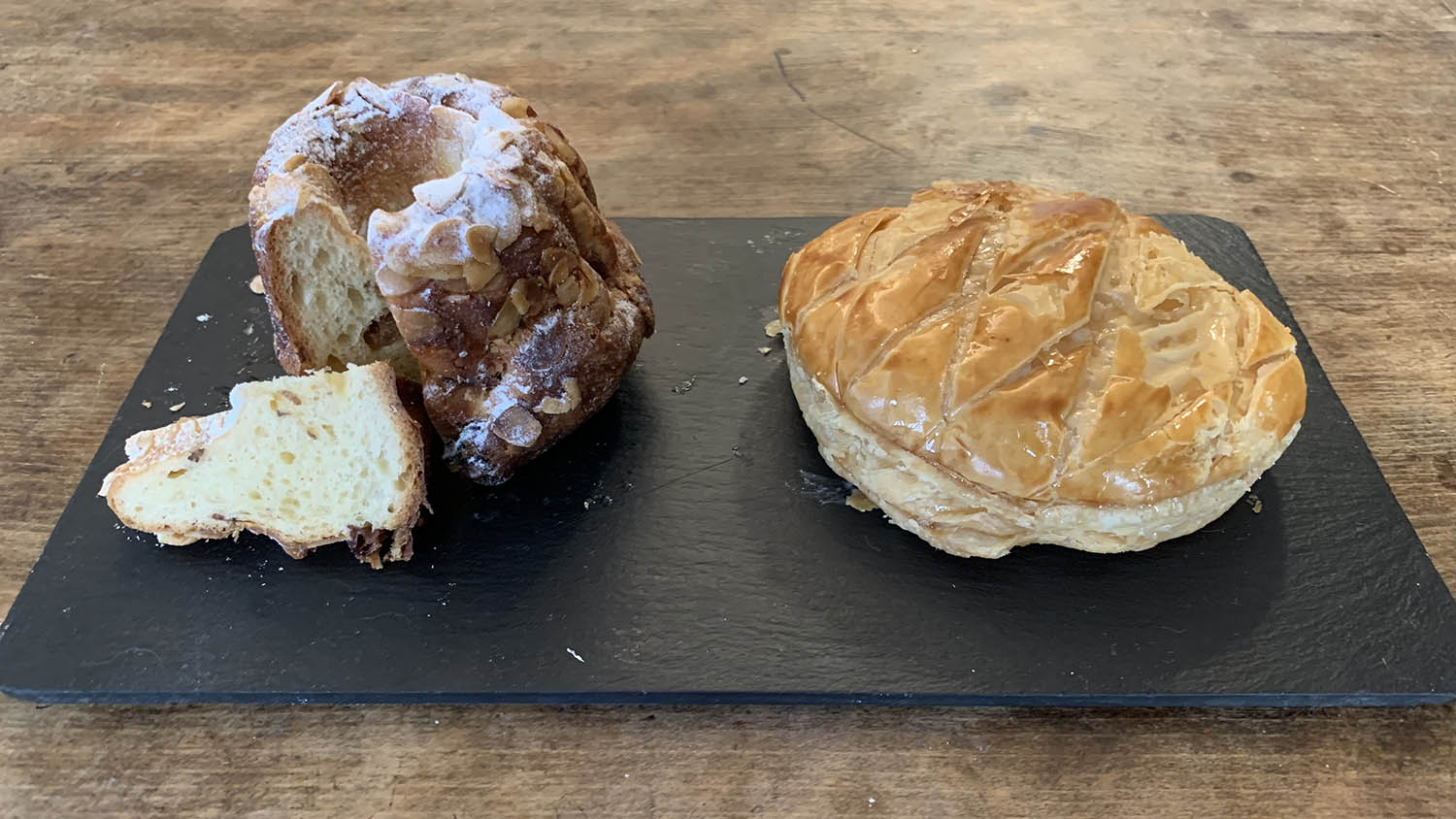
We also wanted to test the baba in a jar.
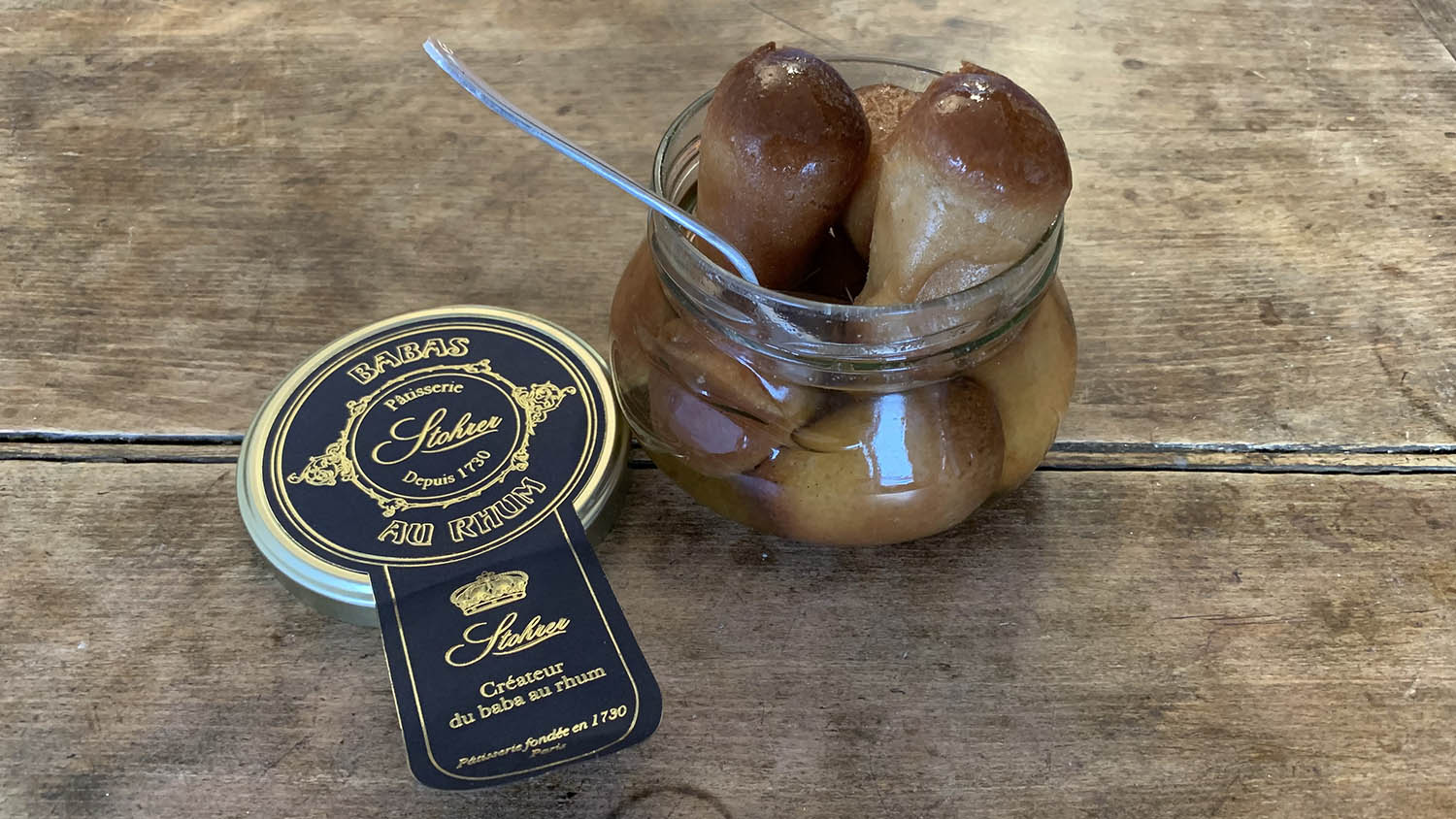
It is a product that we see a lot in Italy. It keeps for 6 months and one month after opening. The brioche is a little denser to make it less fragile and the syrup is a little sweeter, to help preserve the product. Lovers of sweet pastries will appreciate it.
There are no recipe books at Stohrer. For 300 years, the know-how has been passed on by word of mouth. It is also the quality of the recipe transmission that has made the reputation of Stohrer. It is also what has allowed this pastry to pass through time and fashions and to offer a true timeless gourmet pastry.
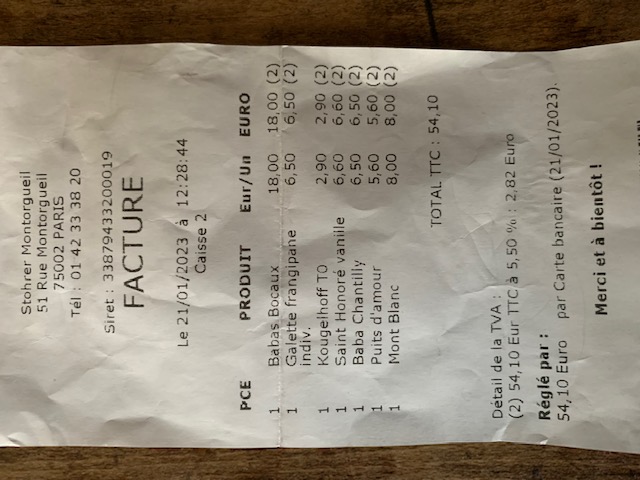
Stohrer
Open every day from 8:00 am to 8:30 pm
51 Rue Montorgueil, 75002 Paris
https://stohrer.fr/